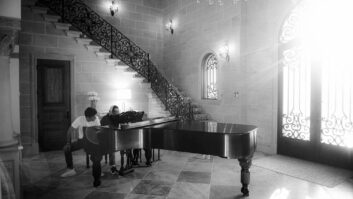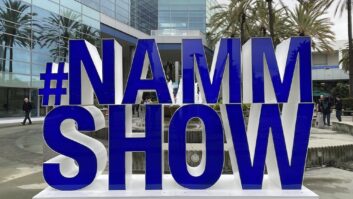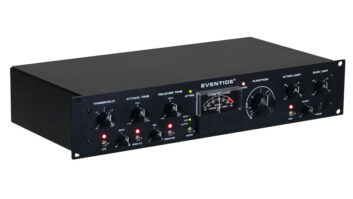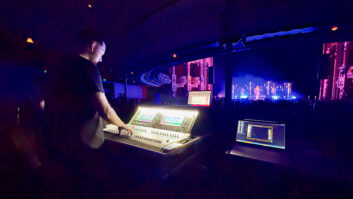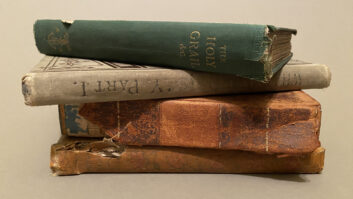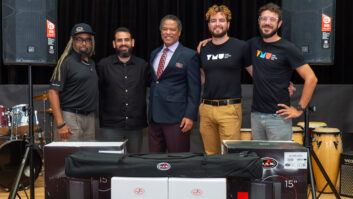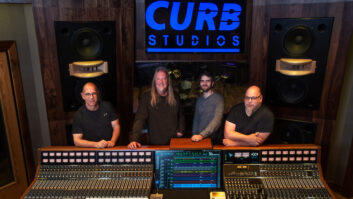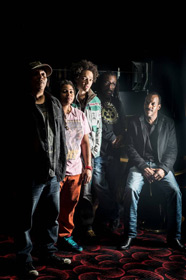
It’s been 10 years since the New Orleans good-time party band Dumpstaphunk—spearheaded by keyboardist/singer Ivan Neville and his guitar-playing cousin Ian Neville (sons of Aaron and Art Neville)—made their debut at the Crescent City’s famed Jazz & Heritage Festival. But in some ways, it feels like they’re only hitting their stride now, with the late-July release of just their second full album, Dirty Word. With nods to soul/funk pioneers Sly & the Family Stone, and various other ’60s and ’70s funkateers (including The Meters, headed by Art Neville), Dirty Word offers a remarkably fresh update on a sometimes neglected genre.
All five members of Dumpstaphunk are monster musicians—besides the Nevilles, the lineup boasts two great bassists (who also play guitar and sing), Tony Hall and Nick Daniels, and the explosive drummer/singer Nikki Glaspie. On the new album, this molten core band is augmented on various tracks by such local friends as the Grooveline Horns, Trombone Shorty, Art Neville, the Rebirth Brass Band and Ani DiFranco, and from L.A., Flea of the Red Hot Chili Peppers, a band that knows a bit about funk. All the songs are credited to the entire band except two well-chosen ’70s covers—“Water,” by Graham Central Station and “If I’m in Luck” by Betty Davis.
Most of the tracking for Dirty Word took place at Fudge Recording Studio in New Orleans, originally the private domain of the band Better Than Ezra, but more recently a commercial facility owned by Ezra bassist Tom Drummond, engineer/producer Jack Miele and guitarist Shane Theriot. Miele and former Fudge staffer (now independent) Jacques deLatour engineered the sessions, which were produced by Dumpstaphunk.
“We didn’t have an allotted time to make the record,” Ivan Neville says, “so we went in for a few days here and there when we were off the road for about a year. We had a few ideas ready, some stuff we wrote on the fly in the studio, and there were also songs that needed developing. It’s a cool vibe at Fudge. We cut live with the full band, but did overdubs and the vocals later.”
According to engineer Miele, Fudge’s large, open recording space was originally modeled after Abbey Road’s “B” studio, complete with elevated control room. At the time Dirty Word was recorded, the studio was equipped with a Gamble console (since replaced by a modded Amek Matchless) and cut to Pro Tools using mostly vintage mics and analog signal processing.
“They were all set up in the main room,” Miele says, “but only Nikki’s drums were fully miked in that room—we had Royer 121s for room mics, Coles 4038s for overheads, a Pearlman TM 1 as a kit mic maybe three or four feet in front, and then, on the individual drums, a [beyerdynamic] M88 on snare, [Sennheiser] 421s on the toms and a [Audix] D6 on the kick. Ivan’s B-3 [and clavinet] was in the main room, but the Leslie was in the kitchen/foyer. We had Ian’s amp upstairs in an iso room with a mic [an Echolette ES14], and Nick’s and Tony’s bass amps in what we call the bass closet, with an [Electro-Voice] RE20 on one, a [Neumann] TLM 103 on the other] and also DI’d.”

Dumpstaphunk at Fudge Recording.
Photo: Jack Miele
Vocal mics for the four singers at Fudge included a Neumann TLM 193, Sony C-37A, Neumann U 87, Shure SM7, RCA BK-5A and “for some of the backups, they’d be in a circle with their own mics and also an RCA 77 in omni in the middle,” Miele says. Ivan comments, “We think it’s a special thing we’ve got going with the vocals, and we try to incorporate the different voices as much as we can.”
Additional recording and a number of instrumental and vocal overdubs were done at The Music Shed in New Orleans, with Kyle Lamy engineering in Studio A on a Trident 80B board. For the vocals he cut, Lamy used a combination of Neumann 87s and A-T 4050s into Neve 1079 EQ and ADL 1000 compression. “Amazing singers!” Lamy says. “They’re all so different and versatile in their timbres.” He also gives high marks to Ian Neville, who “on a whim can pull out seven guitar parts from his head and throw ’em down.”
Mike Napolitano mixed nine of the 11 tracks on Dirty Word at his home studio in New Orleans, in consultation with Ian and Ivan. “I have a [Roll Music Systems] Folcrom external summer, which I use not just for the analog summing,” Napolitano says, “but for things that need to be gained back up. By picking which mic pre you use to capture that gain, you can endow it with some personality.”

On the challenge of mixing multiple basses, he says, “It’s not as hard as you might think. Those guys really know what they’re doing. They find ways to make it work between the two of them before it even gets recorded. Their tones and the way they play accommodate each other, so it fits.”
As fate would have it, the song “If I’m in Luck” was the last high-profile mix done by the late engineer Andy Johns, along with Bruce Witken, at Witken’s L.A. studio. That track, not surprisingly, has a strong rock edge to it. “By choosing Andy to do it, you were going to get that,” Witken says. “When the first mixes got sent back, they just had a few tweaks and that was it. Andy was Andy—he liked it loud.”
“We were honored to have Andy work on the record,” Ivan adds. “He and Bruce did a great job on that track.”

